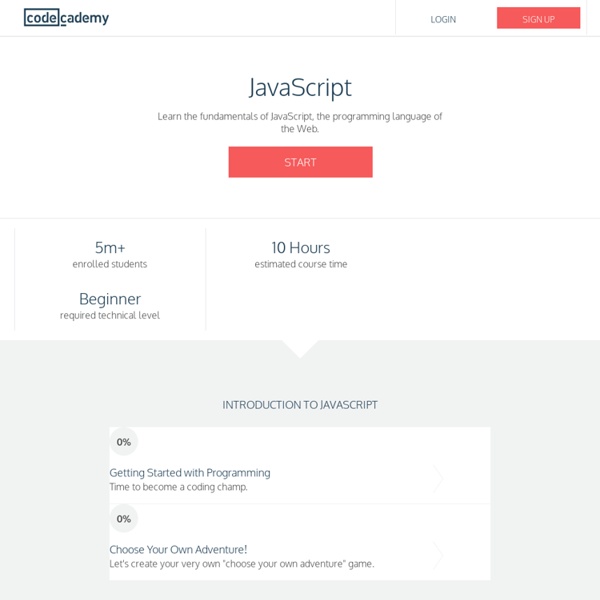



Shlomoh Sherman's Web Page Quote design before code Bring Your Design to Life: Intro to Motion Graphics Have an illustration you would love to animate? Maybe that photograph you took is begging to come to life? In this class I will break down the process top motion graphic and animation studios use from concept to completion. Starting with theory and principles, I will then take you through step by step tutorials on prepping your design for animation, and finally animating it. The class will begin with a lesson on the 12 principles of animation and how they relate to motion graphics, as well as the general process all studios go through from idea to completion. Following that you will prepare your own design, photograph, comic, etc, in Adobe Photoshop or Illustrator, breaking it apart and preparing it for After Effects. I will also be sharing resources, tutorials, and a look into some of my own projects. Hope to see you in class!
JavaScript Quick Guide What is JavaScript ? Javascript is a dynamic computer programming language. It is lightweight and most commonly used as a part of web pages, whose implementations allow client-side script to interact with the user and make dynamic pages. It is an interpreted programming language with object-oriented capabilities. JavaScript was first known as LiveScript, but Netscape changed its name to JavaScript, possibly because of the excitement being generated by Java. The ECMA-262 Specification defined a standard version of the core JavaScript language. JavaScript is a lightweight, interpreted programming language.Designed for creating network-centric applications.Complementary to and integrated with Java.Complementary to and integrated with HTML.Open and cross-platform Client-side JavaScript Client-side JavaScript is the most common form of the language. The JavaScript client-side mechanism provides many advantages over traditional CGI server-side scripts. Advantages of JavaScript Hello World! Example
JavaScript Tutorial Radio - Listen to Free Internet Radio, Find New Music 4 Beginner Projects for Launching into Game Programming Photo credit: minipixel Lots of students and beginner developers ask me, “What’s the fastest way to become a game programmer?” Once you’re an amazing programmer, the world is open to you. So how can you turbocharge your skills as best as possible? Experience is the best teacher. On the other hand, if you decide you want to learn collision detection in C++, and then you design a project for yourself that involves lots of collisions, by the time you’ve finished that project, you’ll be at least at an intermediate skills level, if not an expert. Does it take more work than skimming a book or tutorial? In this article I’ll cover four projects that I think are perfect for beginner game programmers to get them up to intermediate level, in order. Project #1: Simple Text Game Back in the days before GUI’s (graphic user interfaces), many of the fun games were just all text. It’s amazing how much fun you can have without any images at all, just text and your imagination. Project #2: RPG Battler
Triggering Navigation with Scrolling in JQuery Home > CSS, Front End Development, How to, HTML, Javascript > Triggering Navigation with Scrolling in JQuery Scrolling as your sites main source of navigation is all the rage. With the amount of one page sites out there I thought it would be helpful to show how to trigger your navigation to changed based on how far you’ve scrolled down. What we’re building We’ll be creating a simple 1 page site. Steal the Previous Code We’re just going to steal the HTML and CSS from the previous post Smooth Scrolling in Jquery. Here is what we’re starting off with: The New CSS In new found code aquired by a five finger discount needs some styling. The JQuery The first thing we need to know is how far each section is from the top. Now that we can pull where each section is, we can now setup our navigation to scroll to a section when clicked. That takes care of the nav, but now comes the meat and potatoes. The last thing we need to do is call the function when someone scrolls and when the page is first loaded.